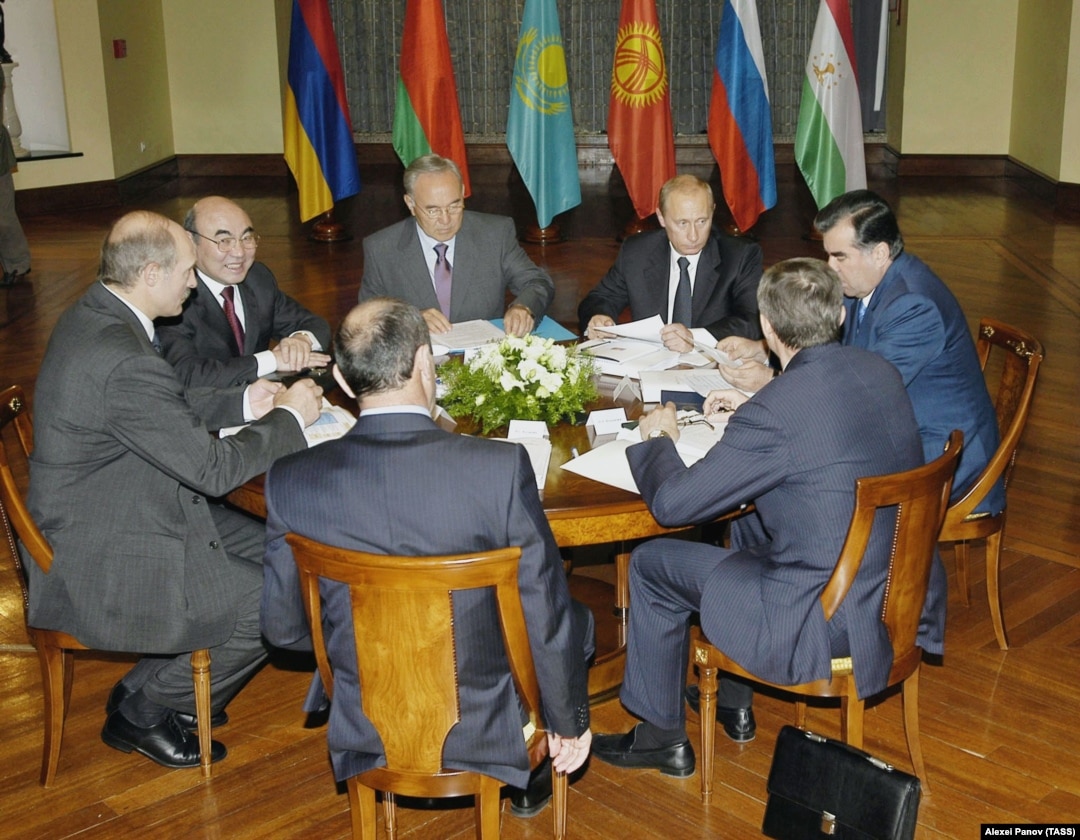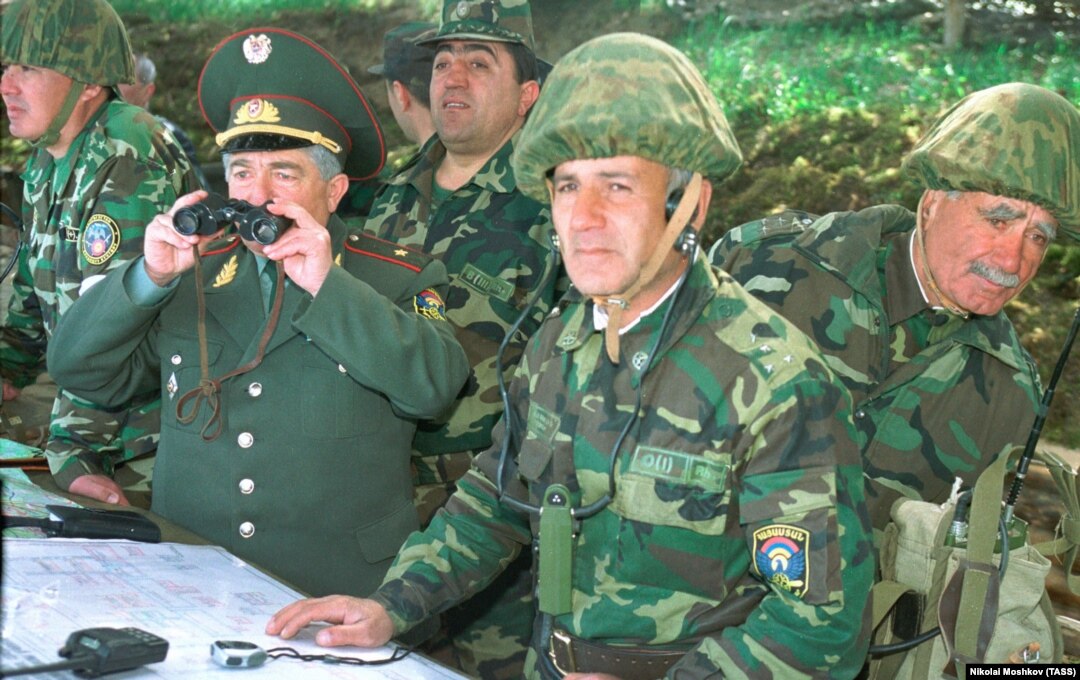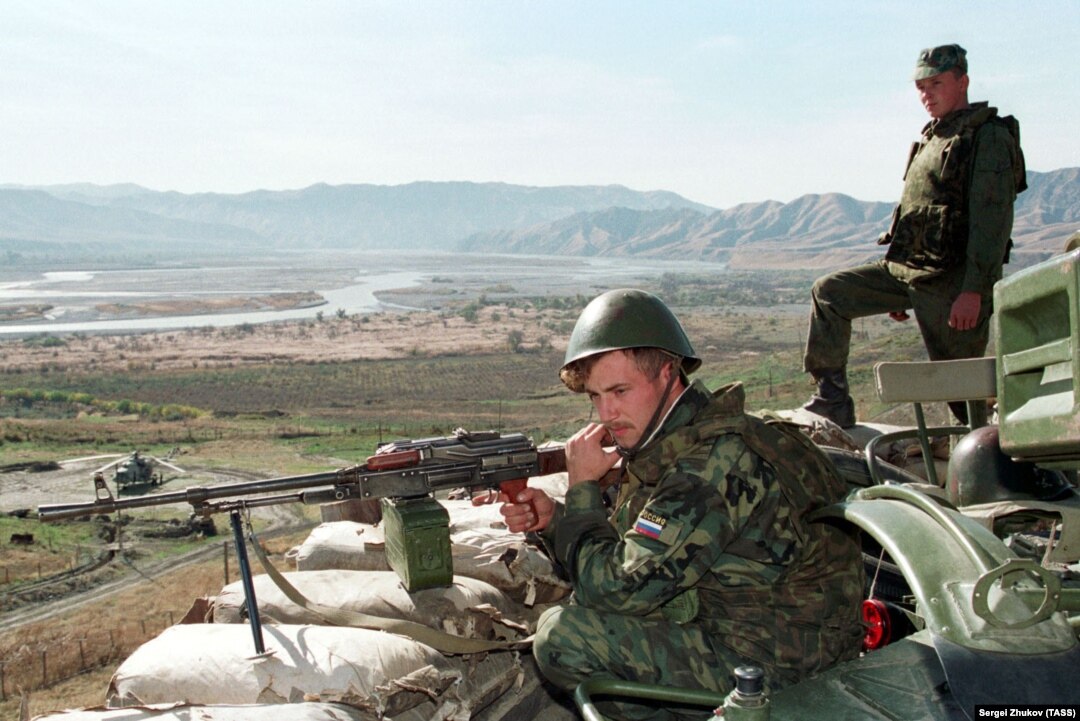What Is The CSTO Military Alliance?

This June 2004 photo is one of first images in existence of a meeting of the heads of the Collective Security Treaty Organization (CSTO) military alliance.
The image shows (left to right) Presidents Alyaksandr Lukashenka of Belarus, Askar Akaev of Kyrgyzstan, Nursultan Nazarbaev of Kazakhstan, Vladimir Putin of Russia, Emomali Rahmon of Tajikistan, and Secretary-General Nikolai Bordyuzha (with back to camera on right) and President Robert Kocharian of Armenia (back to camera in foreground) during a meeting of the CSTO in Astana, Kazakhstan.

Armenian officers watch a CSTO exercise under way in Russia’s Nizhny Novgorod region in 2002.
The CSTO is a military alliance of six former Soviet states that is widely viewed as a Russian-led counter to NATO. The alliance is bound, at least on paper, by the same “an attack on one is an attack on all” clause of NATO's Article 5.

Russian troops keep watch on the Tajik border with Afghanistan in 2001.
Russia, Kazakhstan, Armenia, Uzbekistan, Tajikistan, and Kyrgyzstan signed a treaty in 1992 that would be the precursor to the CSTO alliance. The following year, Belarus, Azerbaijan and Georgia also signed on. Georgia, Azerbaijan, and Uzbekistan later quit the treaty.
Armenian soldiers march during a CSTO military exercise outside Armavir in August 2008.
One key condition of the alliance is that any member requires the approval of all other CSTO countries to station foreign troops on its soil, meaning for example that Armenia would almost certainly be blocked from allowing NATO troops onto its territory while remaining a part of the CSTO.
Men face off amid deadly ethnic unrest in Osh, southern Kyrgyzstan, in June 2010.
During widespread violence between ethnic Uzbeks and Kyrgyz in Kyrgyzstan in June 2010, the first major test of the alliance came when Bishkek called for the CSTO to send troops to quell the unrest.
The CSTO leadership declined, citing a mandate to deal with external threats rather than domestic unrest. The decision was slammed by Belarus's Lukashenka, who asked out loud, "What sort of organization is this that if there is bloodshed in one of our member states and an anti-constitutional coup d'etat takes place, this body keeps silent?"
A woman glances at a Russian CSTO peacekeeper in Almaty, Kazakhstan, in January 2022.
The CSTO's first and only show of force came as major anti-government protests swept Kazakhstan in January 2022. The Kazakh leadership requested and received a CSTO peacekeeping force that included some 2,000 troops from member countries, including 100 Armenians.
Armenian Prime Minister Nikol Pashinian attends a meeting of CSTO leadership in Yerevan in November 2022.
In late 2022, amid shelling of Armenian cities by Azerbaijan, Armenia invoked the CSTO’s collective-defense provision. The CSTO leadership vowed to send a "fact-finding mission." The ineffective response sparked outrage in Armenia and appears to have marked the beginning of the end of Armenian participation in the alliance.
Kazakh and Kyrgyz troops take part in the CSTO's Indestructible Brotherhood military games in Kyrgyzstan in October 2023.
Armenia did not participate in the alliance’s 2023 exercises in Kyrgyzstan and Pashinian has made repeated hints that Armenia would formally withdraw from the CSTO.
The Armenian leader said during a parliament session on June 12: "We have suspended our membership in the CSTO. The next logical step would be our withdrawal from the organization." He added: "We will decide when it happens. It could be a month, a year, or three years from now."

